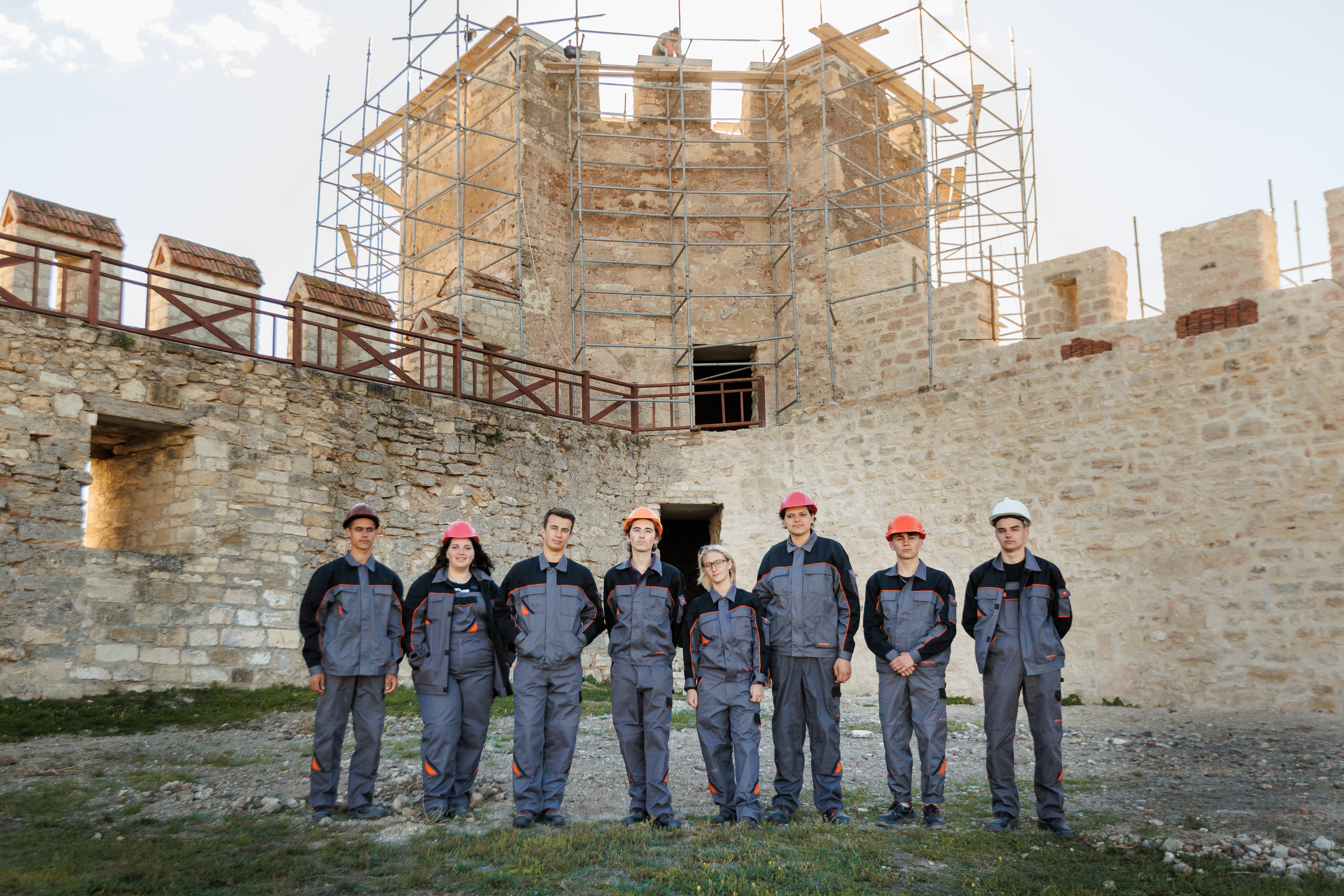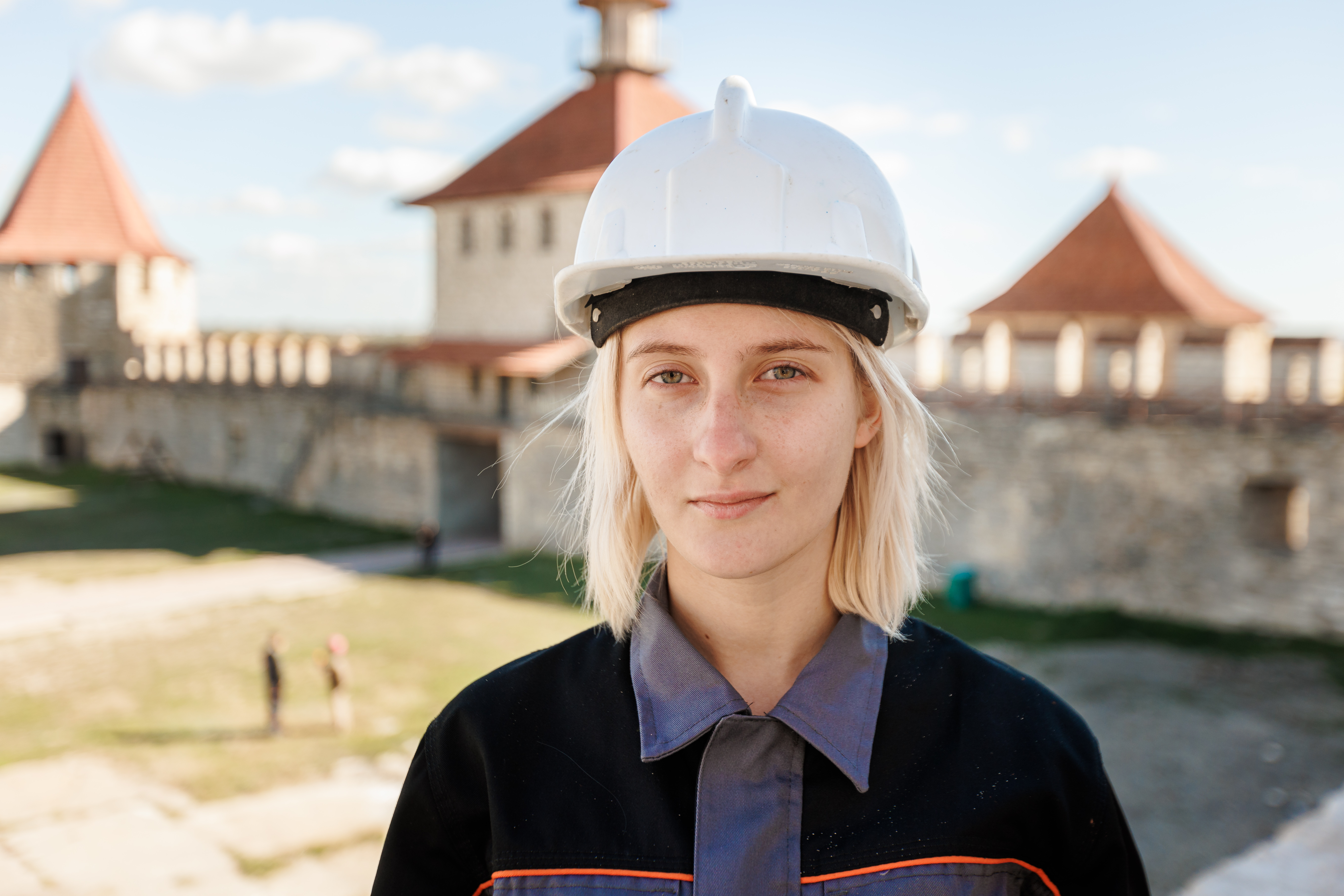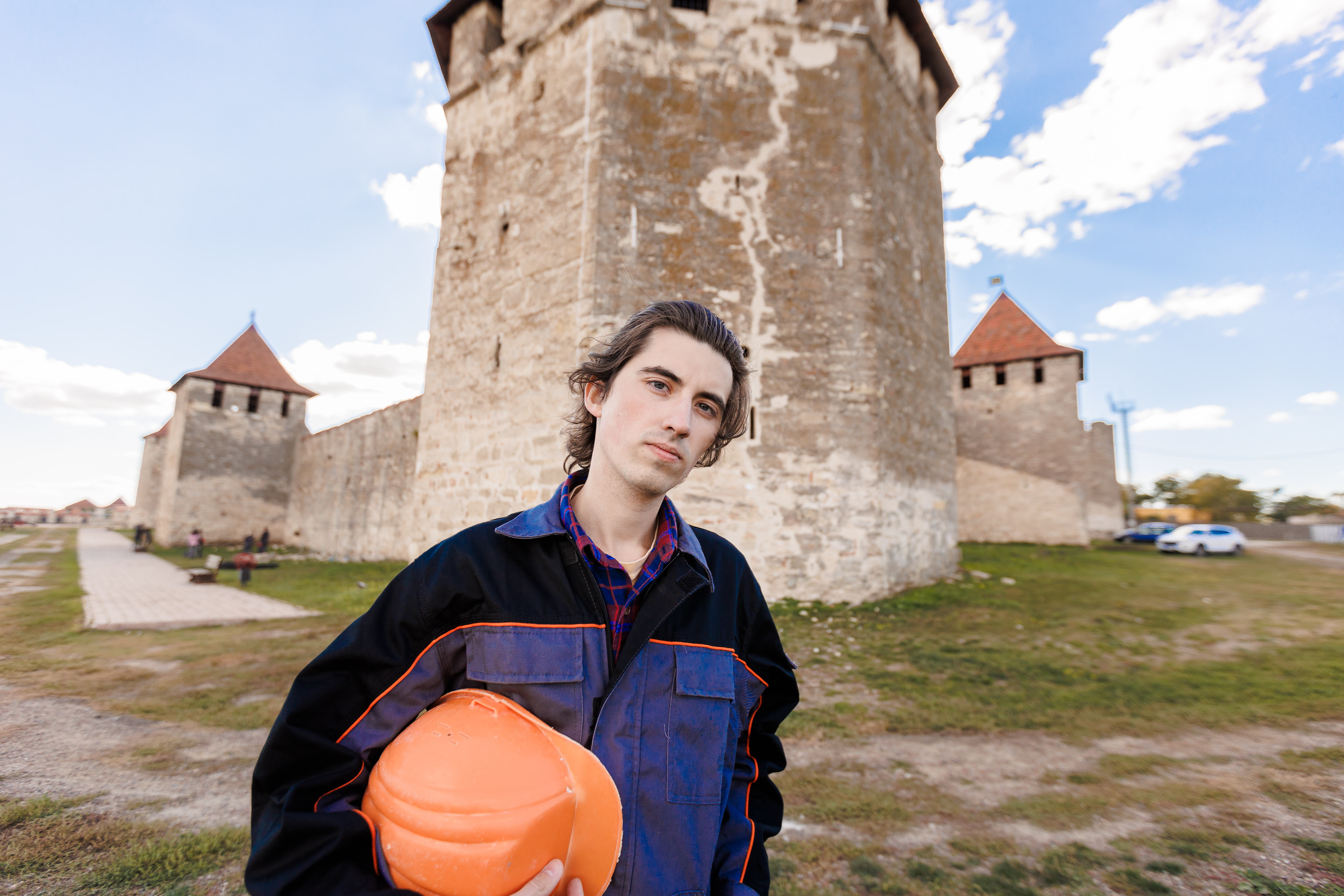A first apprenticeship for young people in restoration and conservation works took place at the Tighina (Bender) fortress, with the financial support of the EU Confidence Building Measures Programme, implemented by UNDP Moldova.

Eight young people from both banks of the Nistru River participated during 3-14 October at a first apprenticeship in restoration and conservation at the Tighina Fortress (Bender).
The programme started with an introduction to the history of the fortress of Tighina (Bender) and theoretical lessons which set the essential basis for the practical work.
“It's very interesting to see how such constructions were made in the old days. It's impressive. At the college we took theory courses, but to indeed participate in the restoration process is a whole different thing,” says Iulia Răilean, a student at the Center of Excellence in Construction.

Iulia Răilean, a student at the Center of Excellence in Construction
The young people learned from experts what practical restoration and conservation methods are used internationally. They also had the rare opportunity to participate in some of the conservation work carried out at the Tighina fortress.
“In reality, it's much more difficult to restore a building than to build a new one. The responsibility of the site supervisor is enormous, because the building's durability in the future will depend on the quality of the works carried out. This way we can preserve history and our descendants will be able to admire buildings, constructions made centuries ago,” says Ruslan Amoașii, a student at the Centre of Excellence in Construction.

Ruslan Amoașii, a student at the Centre of Excellence in Construction
The future restoration and conservation specialists, eager to save the cultural heritage on both banks of the Nistru river
“We teamed up with colleagues from Chișinău, so this apprenticeship was a unique experience. We learned about engineering curiosities and how this fortress was built in the old days. Analysing the fortress's architecture, you get an idea not only of how the fortress was designed and built, but also of the way our ancestors were thinking. The thickness of the fortress walls is incredible: about three metres. It's curious to find out how the passageways and tunnels were built,” says Alexandra Codrul, a student at Tiraspol Construction College.

Alexandra Codrul, a student at Tiraspol Construction College
During two weeks, the students were involved in masonry restoration work, using the same types of local building materials used in the fortress construction – observing, in particular, their chemical and structural composition, for a good bond between the existing masonry.
At the same time, they learned about the roofing of a tower, where wood was used and fixed to the masonry wall by metal elements.
“I live in Tighina and I remember seeing the fortress in ruins. Perhaps not everyone knows about and understands the grandeur of the restoration works that are now being carried out at the fortress – this is absolutely unlike anything that has ever been done to the fortress. The specialists show us all the drawings, they practically demonstrate various restoration procedures, so that in the future we could become restoration specialists and we could even participate in the restoration of other historical sites in Moldova, as there are other fortresses, manor houses or other valuable historical buildings that deserve attention. It is important to pass on this knowledge to the younger generation, as this is the only way to save our historical cultural heritage,” says Alexander Subotin, a student at the Polytechnic College of Tighina (Bender).

Alexander Subotin, a student at the Polytechnic College of Tighina (Bender)
The students would like to get more involved in restoration projects in the future.
“I would like the restoration process to continue, so that the fortress will look beautiful and various events, historical quests can be organised here and the fortress will be included in the UNESCO heritage list,” Alexander Subotin added.
In the Republic of Moldova, young people cannot yet study to become specialist in restoration and conservation of architectural monuments. They can study abroad, the nearest place of study being Romania.
Between 2017 and 2019, the EU twinning project “Support for the promotion of cultural heritage in the Republic of Moldova through its preservation and protection” was carried out, with the participation of two teachers from the Center of Excellence in Construction. Inspired by the exchange of experience, they proposed to modify the curriculum.
Thus, a theoretical course on the restoration and conservation of monuments was included in the curriculum of the Construction and Operation of Buildings and Structures. The apprenticeship organised at the initiative of the EU Confidence Building Measures Programme, implemented by UNDP, made the participating students more interested in the field of restoration of historical monuments.
The EU Confidence Building Measures Programme, implemented by UNDP Moldova, carries out the restoration and conservation of 12 cultural-historical sites on both banks of the Nistru river, including two major buildings: the Chişinău Circus and the Tighina (Bender) Fortress. The programme contributes to building trust between people on both sides of the Nistru river by involving them in joint development projects.

 Locations
Locations





